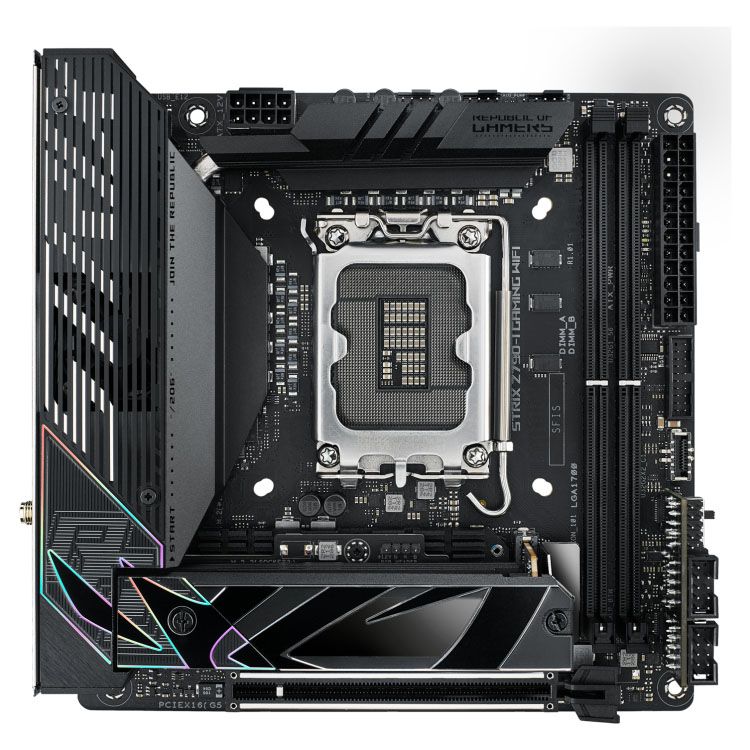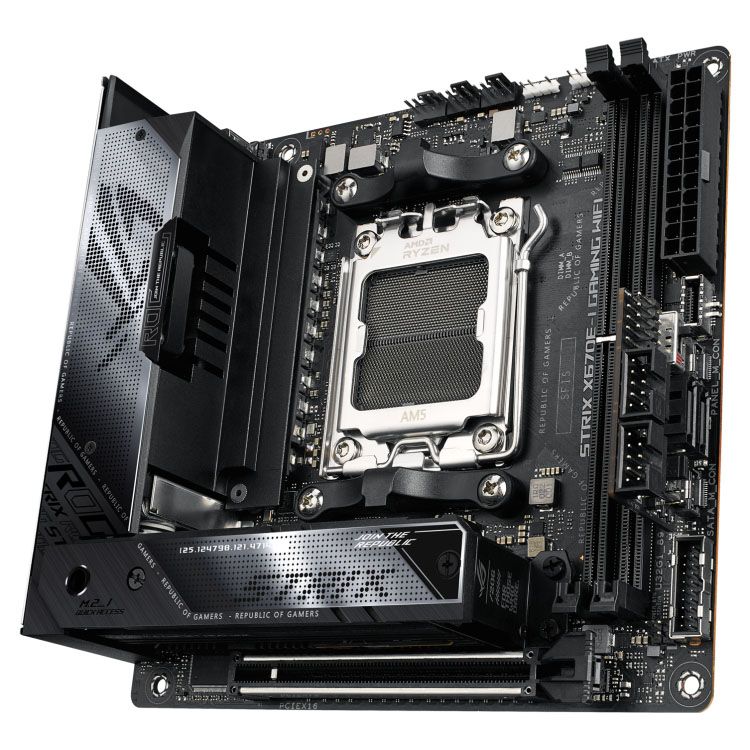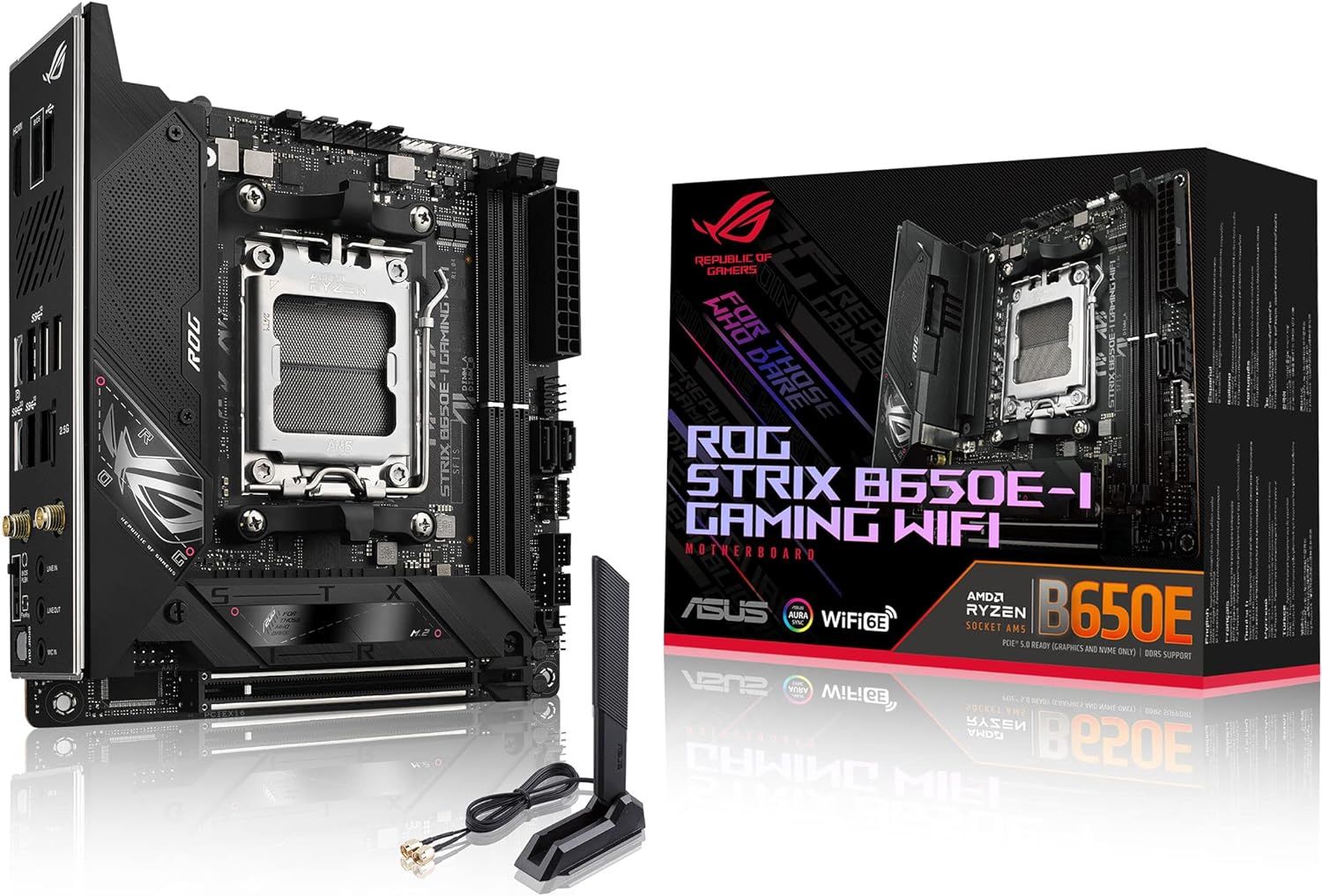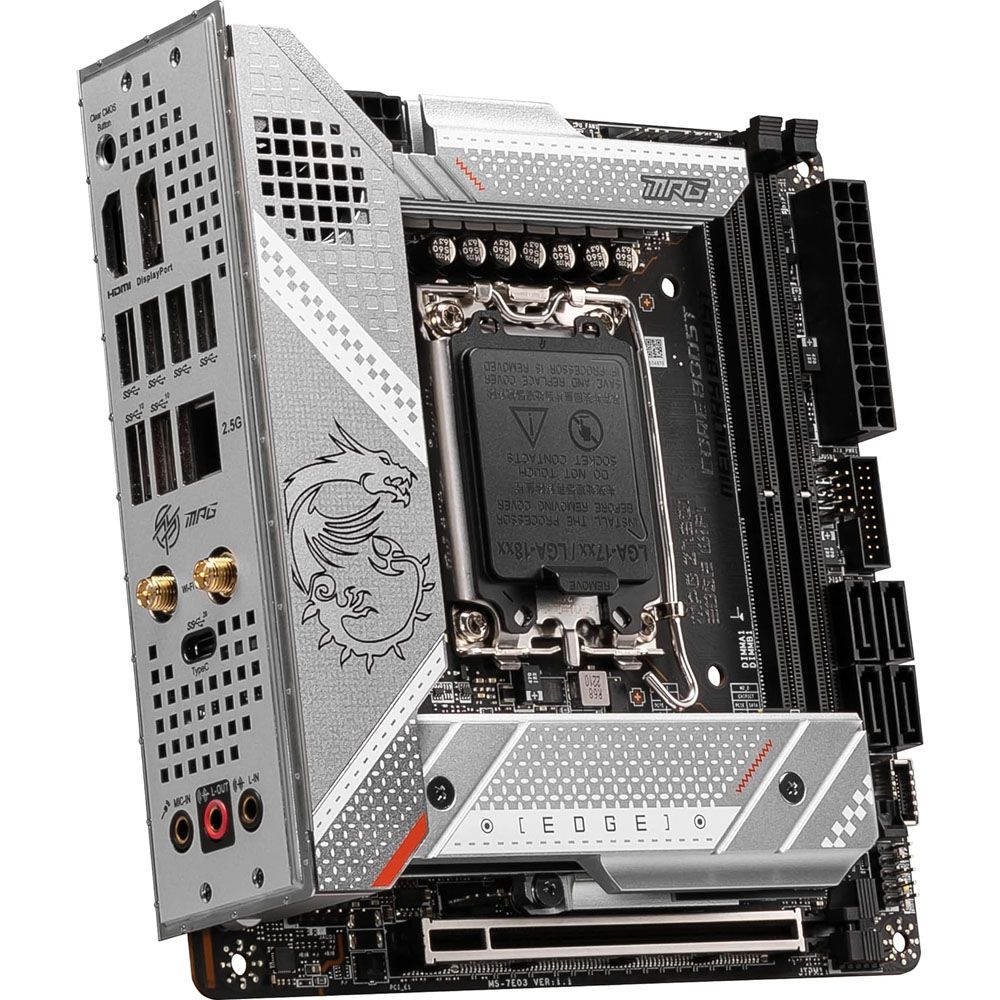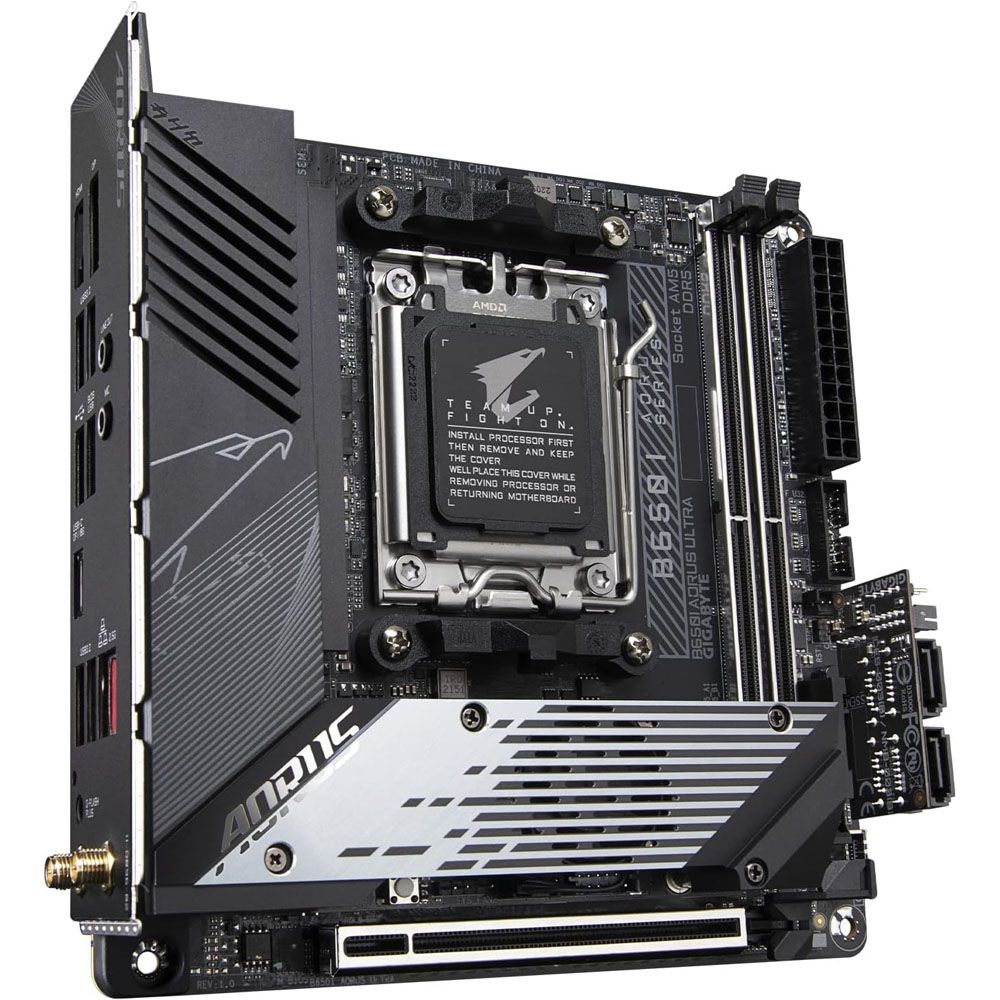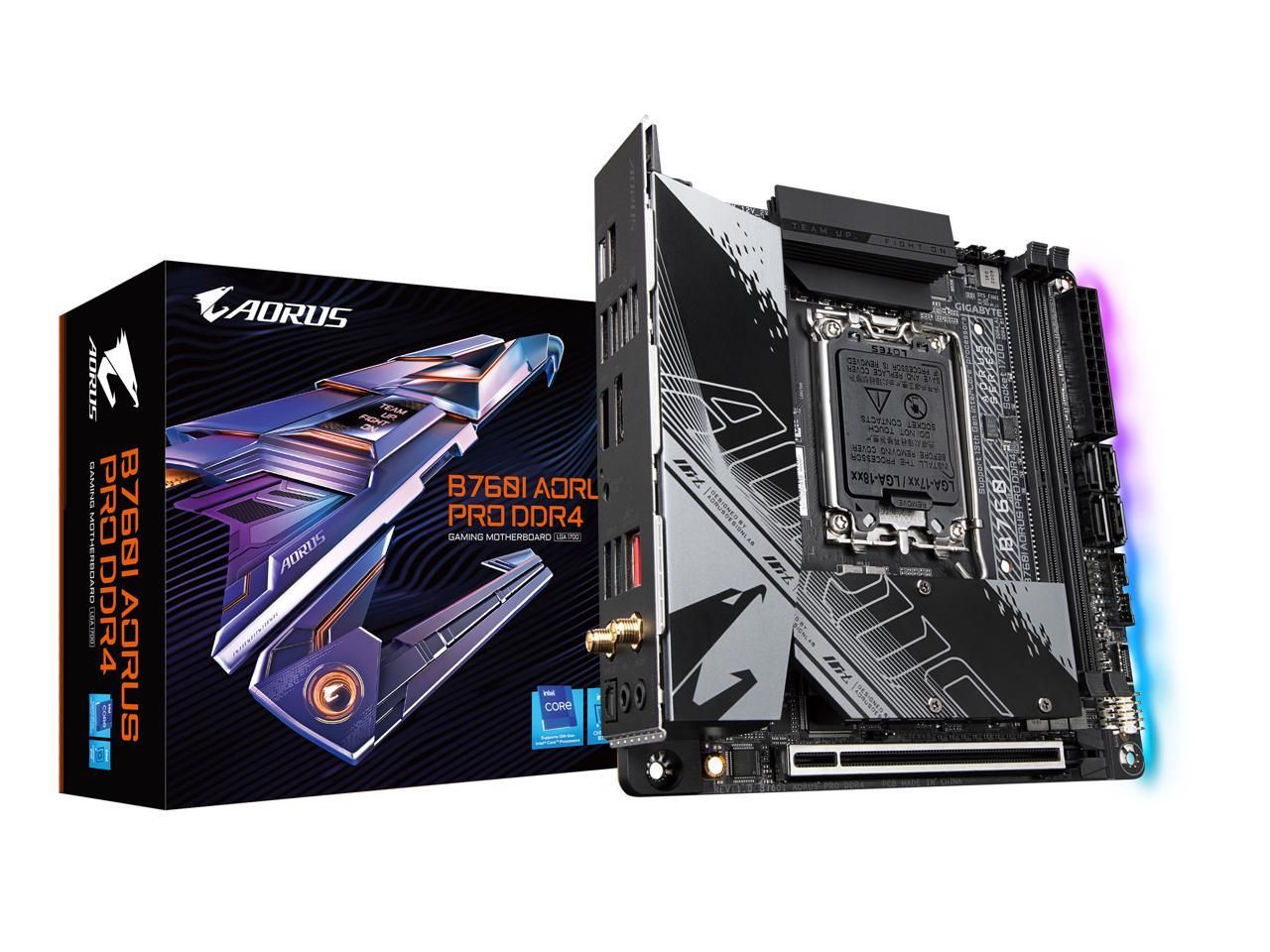Searching through the vast collection of the best motherboards from each vendor can be frustrating and time-consuming. Dozens of chipsets, compatibility with components, cooling, and connectivity are a handful of factors users have to keep in mind when selecting a motherboard. However, it doesn't have to be irksome, especially when it comes to gaming motherboards.

Best AMD Motherboards For Gaming In 2024
Here are our picks for the best AMD AM5-based motherboards for gaming that players can buy right now!
Mini-ITX motherboards are small, but they still pack a punch with unbelievable features that weren't possible a decade ago. Due to their tiny form factor, these motherboards require less space inside the chassis and can easily fit in smaller cases. They also make fantastic portable gaming and productivity machines that can execute almost every operation possible on a comparatively bigger ATX build.
If you're looking for the latest and best in Mini-ITX motherboards, you're in luck! Game ZXC has compiled a list of the top feature-packed Mini-ITX motherboards from each vendor that support the latest Intel and AMD CPUs, all while offering unparalleled specifications, aesthetics, and functionality.
Updated on June 29, 2024 by Muhib Nadeem: Motherboards have gotten increasingly better at handling daily demands. In light of this, the guide has been ironed out to provide more user-centric information, ensuring preferences are also catered for alongside practicality.
Game ZXC's Picks for the Best Mini-ITX Motherboards in 2024
Asus ROG Strix motherboards are typically expensive, but they also boast premium construction and high-end features. For Intel CPU users, the ROG Strix Z790-I Gaming is a no-compromise board for all types of builds. It features gorgeous aesthetics with RGB lighting-equipped heatsinks over the I/O and M.2 connectors. Whether users want gaming-focused builds or builds that excel in productivity, this motherboard can handle it all. With support for up to 96GB of DDR5 memory at up to 7600MHz through Intel XMP, you won't have to worry about upgradeability.
However, its more notable features include the power delivery with 10+1 power phases each rated at 105A of current. It will make sure the processors are fed enough voltage for stability and the dense heatsinks over the VRM components will passively dissipate heat. Another major advantage of this board over the others is the included ROG Strix Hive Controller. Sure, stock coolers have a bad rep, but this is hardly a concern on the higher end, especially for additional peripherals and controlling miscellaneous functions like BIOS Flashback, Volume Control, and Overclocking buttons.
Multiple USB ports reside on the I/O, including different generations of USB-A and USB-C ports for peripherals and faster USB devices. Moreover, there is a Clear CMOS button at the bottom for resetting the BIOS if anything goes wrong with overclocking or BIOS upgrades. This is especially helpful as clearing CMOS requires opening the case panel to access the CMOS pins or battery.
Lastly, for storage, there are two SATA ports and two M.2 connectors for fast storage with the primary M.2 connector featuring a native PCI-E 5.0 x4 mode. This motherboard serves the higher end of gaming enthusiasts, and it spares no expense in ensuring satisfaction. It's sturdy, it has all the bells and whistles, and it can ensure reliable performance.
Except for a lack of RGB lighting, the ROG Strix X670E-I Gaming Wi-Fi is basically the AMD version of the previous motherboard. However, there are some differences between the two that make it advantageous (or limited) over the Z790-I in some situations.
Apart from a similar power delivery system and the included ROG Strix Hive Controller, this board has a different I/O layout with more USB-A ports for supporting multiple peripherals at the same time. The disadvantage is the absence of a Thunderbolt port (which is faster than USB-C) and the Clear CMOS button, which can sometimes be a lifesaver.
It's a bit on the higher end when it comes to price. However, despite the price and the lack of RGB lighting, it more than makes up for it in terms of stability and performance.

The Best Motherboards For The 14900K
These are some of the best motherboards you can pair with Intel's fastest consumer-grade CPU.
Also, the RAM frequency support is higher on this one, but that may or may not benefit users as both Intel and AMD processors react a little differently to highly clocked memories, even if the frequencies are identical. Except for these differences, most specs are identical to the Z790-I. Plus, users get to enjoy the latest M.2 connectors, PCI-E 5.0 x16 slot, Wi-Fi 6E, and some overclockability, thanks to the ten Vcore power phases with insanely high current support.
The B650E chipset is slightly nerfed compared to the X670E, but brings adequate features for a powerful modern gaming and productivity build. Despite falling short in a few areas, the B650E chipset offers better PCI 5.0 support than the X670. This is why the ROG Strix B650E-I Gaming Wi-Fi can be used to build a mid-range gaming build with a potent processor like Ryzen 5 7600X or even Ryzen 7800X3D. Its VRM provides a 10+2+1 power phase design with enlarged heatsinks to let users experiment with the clock speeds and relieve worries about too much about VRM thermals.
With native support for PCI-E 5.0, users will have a PCI-E x16 and M.2 connector supporting the Gen 5.0 speeds. Even though the current market doesn't have a GPU with such an interface, the board opens up the door to supporting such next-gen GPUs. The board provides multiple headers for cooling and RGB/ARGB devices and has dedicated Q-LEDs for basic troubleshooting.
What's great is the presence of a multipurpose FlexKey button in the I/O, which lets users choose what function they would like the button to execute. Whether it's a simple system reboot or controlling the reset of the BIOS, it's a highly handy feature.
A superb alternative to the Gigabyte AORUS Ultra, the MSI Z790I Edge Wi-Fi brings an identical VRM design with 10 Vcore power phases each rated at 105A. The design boasts a fantastic cooling solution with two aluminum heatsinks that are connected via a copper heat pipe for faster heat dissipation. For a price tag of slightly over $300, this board provides a higher value than the Asus boards, particularly because it also provides 4x EZ Debug LEDs that are absent on most of the motherboards that are listed in this guide.
The only limitation here is the presence of a single M.2 connector which can limit users' ability to add high-speed storage. However, this is compensated by providing four SATA ports for adding multiple SATA drives. The I/O is also decent with six USB ports (mostly 3.2 Gen 1 and Gen 2) plus a Type C Gen 2x2 for high-bandwidth peripherals. Besides that, users will find a Clear CMOS button, which is another handy option for troubleshooting major faults in the BIOS.
It might be the cheapest, but it's not the slowest. The B650I AORUS Ultra is the ultimate budget mini-ITX motherboard for budget and mid-range AMD builds. Even though it's not suitable for overclocking flagship processors, its 11 power phases will take care of high clock speeds. Despite being well below $300, the board features a durable 12-layer PCB that hides all the connection traces well and makes it a reliable option.
However, what sets it apart from all the other motherboards in this guide is the availability of three M.2 ports and four SATA ports, which is an insane storage capacity on an ITX motherboard. This sets it apart from other similarly priced motherboards on the market. You can think of it as the king of versatility. Lots to offer, with no clear downsides.

The Best Budget Motherboards for Gaming in 2024
Building or upgrading a gaming PC doesn't have to be an expensive venture. Here are some of the best budget gaming motherboards money can buy!
The only major limitation (if you're being picky) is its incapability to support highly overclocked memories. Unlike most models found in this guide, the B650I Aorus Ultraone only supports a max of 6400MHz of clock speed, which is arguably a lot but can be even better. Still, there are plenty of other features that overshadow this limitation, including the already-mentioned features and connectivity.
The Gigabyte B760I AORUS Pro DDR4 is the best budget Intel Mini-ITX motherboard for several good reasons. First, it is priced competitively as a sub-$200 Mini-ITX motherboard. If you're on a tight budget and have a preference for an Intel CPU, then this motherboard becomes extremely desirable, because it also offers support for 12th and 13th-Gen Intel Core Series processors. It is Dual Channel DDR4 compatible and supports fast, stable wireless internet connections with built-in support for Wi-Fi 6.
The main downside here is that there is no PCI-E 5.0 support. Also, it does not support DDR5 memory, which is going to be the memory standard going forward. Aside from these notable flaws, it is a capable motherboard that is worth considering on a budget as it is significantly less expensive than the premium options in this guide.
What Makes an Ideal Mini-ITX Motherboard?
Potential buyers can choose the best motherboard for their needs and budget by considering several different factors before purchasing a Mini-ITX motherboard to install in their custom PC build. These factors include memory support, power delivery, storage, and I/O (input/output).
Memory Support: Almost every Mini-ITX motherboard comes with two DIMM slots, which means users can only install two RAM modules. While the total RAM capacity that Mini-ITX motherboards can support is generally half that of ATX motherboards, they should still bring support for a total memory size that can meet the needs for high-end gaming and productivity tasks.
64GB of RAM is enough for high-end mainstream computers, but some ITX boards can support up to 96GB of RAM. Moreover, higher clock speed support allows users to achieve higher performance in memory-oriented applications.
Power Delivery: Even though enthusiast overclocking is not recommended on Mini-ITX motherboards due to fewer power phases and smaller heatsinks, mild overclocking shouldn't be a big deal. It's crucial that the VRM can handle higher-end processors.
Storage: At a minimum, a good ITX motherboard must come with two M.2 connectors, as generally, these are equipped with only two to four SATA ports. As most users prefer the faster M.2 interface, multiple M.2 connectors are the only options for storage upgrades.
I/O: The availability of a built-in Wi-Fi adapter is a must. ITX motherboards don't feature additional PCI-E slots for expansion cards other than the primary PCI-E x16 for GPUs. It wouldn't be a great experience to rely on the LAN port only. Moreover, motherboards with USB 3.2 ports and USB-C ports with up to 20Gbps transfer speed should be given priority.
FAQ
Q: Who makes the best Mini-ITX motherboard?
Asus and Gigabyte generally have one of the best mini-ITX motherboards in a variety of models. While Asus excels in providing premium aesthetics, Gigabyte does a good job in providing good functionality in a budget.
Q: Why is Mini-ITX so expensive?
Motherboard vendors have to make sure they design the circuit board in a way that can accommodate as many features as possible. Throwing various ports, headers, and slots in a compact space is complicated and can be costly.
Q: What is the disadvantage of Mini-ITX motherboard?
The path to upgradeability is generally narrower than the bigger form factor motherboards. Also, Mini-ITX motherboards generally don't come with a strong power delivery for enthusiast level of overclocking. The ports and headers are also fewer in numbers compared to M-ATX, ATX and E-ATX motherboards.


